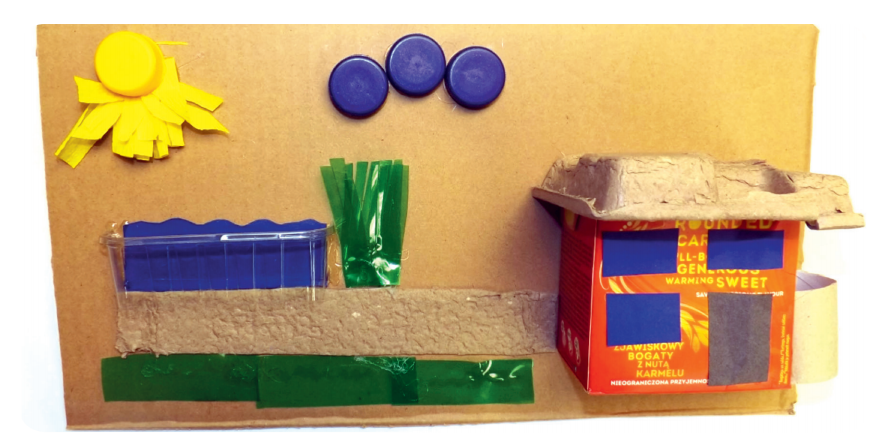



Task 6: Upcycling – My House
Pupils create a decorative spatial image of their own dream house.
scissors, glue, cardboard, coloured paper, packaging materials: boxes, PET bottles, foil, etc.
Cut a cardboard base for creating an image with a snap-off knife for each pupil. Pupils can then create a dream house from the packaging materials they brought. By gluing the boxes and other packaging on the cardboard a spatial image is created. Pupils are limited only by the size of the cardboard.

The photo shows a demonstration of work. For decoration we use coloured paper. We can paint the cardboard base before beginning or wrap it with coloured paper. With the help of various materials, we make the landscape and the house. For gluing of most parts, it is sufficient to use dispersion glue. For some plastic parts (reed by the pool) it is necessary to use a glue gun. According to the age and dexterity of pupils, they work in the designated place under supervision or we can help them stick certain parts. The colours of original materials are used.
Question 1: What parts of the house are made of a recycled material?
Discussion: Some people started creating greenhouses from old jars. Waste wood is also added in the chipboard that the furniture is made from. From less common products we can also find houses from tires, converted wagons, and other varied home modifications.